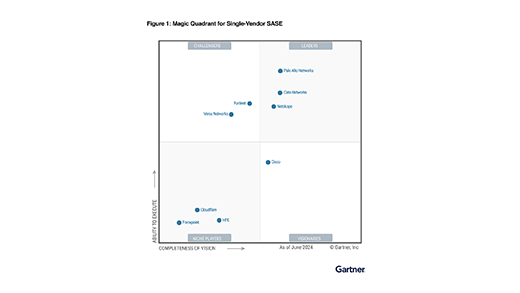Rhino Labs recently released a tool for scanning Google Cloud Storage (GCS) buckets, called GCPBruteBucket. The tool gives users an easy way to search for publicly exposed buckets being hosted by Google Cloud Platform (GCP). Netskope Threat Research Labs used this tool to scan a subset of the Majestic Million for not just exposed buckets, but buckets that would allow anonymous users to change permissions. Buckets which allow anonymous changes by any unauthenticated user could have any of the following happen: the original data could be deleted or modified, inappropriate content could be uploaded to the bucket, or the bucket could be deleted at any time by someone outside of the organization. Given the potential consequences, it’s important to know more about this threat and how to stop it.
In this post, we are going to cover what the misconfiguration looks like and a potential attack that will exploit it. We will cover some ways to mitigate against this in GCP and, ultimately, how Netskope will protect you from attacks based on the misconfiguration.
GCS Bucket Scanning Results
We scanned for thousands of names, and found a little over 10,000 valid bucket names in GCP. Of the buckets found, approximately 3% were publicly exposed. Approximately 5% of those were vulnerable to privilege escalation. In this context, public exposure refers to permissions being granted to ‘allUsers’ or ‘allAuthenticatedUsers’.
The ‘allUsers’ group contains unauthenticated, completely anonymous users, so this group exposes your bucket to anyone on the Internet. The ‘allAuthenticatedUsers’ group contains only users that are some kind of Google User (but don’t have to be a member of your organization). This means that anyone with a Gmail account could access content in your bucket.
Not all of the publicly available buckets are the result of a misconfiguration. As you can see in the chart above, approximately 25% of the buckets exposed were hosting web content. The other 75% were likely publicly exposed by mistake. When hosting web content, it’s expected that the bucket will allow read-only access to ‘allUsers’. The focus of our effort was to find buckets that allow anonymous users to change the permissions. This is problematic because if anyone can change the bucket permissions, they could escalate their privileges within the bucket.
Potential Data Exfiltration and Ransom
If a user is able to promote themselves to ownership level of the bucket, then they could do the following:
- Copy data out of your bucket to an attacker-owned bucket.
- Delete all of your data, and then delete your bucket.
- Create a new bucket with the same name in the attacker’s project, and give read / write permissions for files to everyone. The attacker could grant ‘Storage Object Creator’ and ‘Storage Object Viewer’ roles to the ‘allUsers’ group to accomplish this.
- Copy the data from the backup bucket to the new bucket in the attacker’s project.
Now, the attacker’s bucket with the same name is fully available for your users to upload data into. If your users or partners are automatically uploading data to your bucket by the name, they will not even notice that anything has changed. From there, the attacker could cut-off access to the data and hold it for ransom. See the diagram below:
Mitigating Controls in GCP
There are some mitigating controls available in GCP, which we should examine:
- Organization Policies
- VPC Service Controls
- Encryption of Storage Objects
Let’s discuss each control, and how it could be used to mitigate against data exposure or destruction.
Organization Policies
Organization Policies allow you to implement guard rails around your organization’s resources through constraints. There are only certain services and certain states that are available, and you can read more about them here.
The constraint that is most relevant to this misconfiguration is called “Domain restricted sharing.” If you place your storage buckets with sensitive data under a certain project or folder, you can then apply this constraint at the project or folder level to specify that no IAM permissions be granted to anyone outside of your organization. If you are a GSuite customer, you can grant access to the GSuite ID for your domain. This will prevent any user who has not authenticated to your GSuite domain from being granted IAM permissions to any resources in your project.
The issues with using this constraint are:
- It prevents the IAM permissions being changed, so anything that’s already misconfigured when you apply this constraint will remain that way.
- If your buckets are not already organized and segmented by projects (or folders) such that public and private buckets are clearly separated, then this will not be something you can implement.
VPC Service Controls
VPC Service Controls is another facility provided by GCP that could mitigate the misconfiguration of storage buckets. Google allows you to make resources private, so there’s no Internet access even if the IAM policy would allow it. This control allows you to setup a “VPC Service Perimeter” around projects, and then control access to that perimeter based on things like your IP address, geographic location, and conditions on the device requesting the access. You can read more about VPC Service Controls here.
In this case, you could setup a service perimeter for the project containing your bucket and apply it to the Google Cloud Storage API. Without any other configuration, any request from the Internet will be denied, even if there is an IAM policy that allows ‘allUsers’. Access to the Cloud Storage API would be restricted to resources within the service perimeter.
The issues with using a VPC Service Control are:
- You could easily miss valid use cases and actually interrupt your business while implementing a service perimeter.
- Much like the previous example, if your buckets are not already organized by project, this will not be a feasible solution for you.
Encryption of Storage Objects
You may be asking now if encryption will prevent the exposure of your files. Google provides encryption on stored objects by default, with keys that they manage for us. You might think that it would mitigate against data exposure in this example, but it does not. When we apply IAM permissions that allow the public to read objects in our buckets, Google is obliged to decrypt the data, the same as it would for your internal users. This also applies to Customer Managed Encryption Keys (CMEKs) that you are able to provision and control in the Key Management Service (KMS).
The one case that encryption would not allow data exposure is with Customer Supplied Encryption Keys (CSEKs), because Google never stores those. In this case, you have to store and manage your own keys. For use with storage buckets, you must supply your public key to Google to allow it to encrypt the data being stored in the bucket, but it has no way to decrypt the data for you. So if an unintended party gains access to the encrypted objects, they would need to separately obtain access to your keys in order to decrypt the data.
All of the examples for encryption, unfortunately, do nothing to help mitigate against the fact that an attacker could elevate privileges in your bucket and delete it.
Enforcement and Prevention with Netskope for IaaS
You can prevent this type of attack in your GCS buckets with Netskope for IaaS. Netskope scans resources and controls in GCP and alerts you when it finds something problematic. It doesn’t matter how your buckets are organized, or when the permissions were applied. If any of your buckets have publicly writable permissions, Netskope will alert you of the misconfiguration, so you can remediate it immediately. As long as your environment is being monitored by Netskope, you don’t have to wait for someone else to find your bucket and let you know that it’s open to the world.
We can also alert you when someone is modifying your organization policy constraints or VPC service controls. This way, you can be sure that your guardrails are not removed without your knowledge.
Conclusions
Allowing anonymous users to change the permissions in your storage buckets could be catastrophic, especially if the bucket contains sensitive information. As we showed in our scanning results, it’s likely that there were over 200 buckets that were mistakenly exposed to the public out of 10,000 buckets found, and 14 of those buckets were vulnerable to privilege escalation. In this post we covered some of the mitigating controls offered by Google. Both, VPC service controls and organization policy constraints, can help you to maintain control over your buckets. Encryption will not help with this problem, although customer supplied keys may keep your data from being exposed if read access was mistakenly granted to the public. Netskope for IaaS can help by monitoring your environment for changes to bucket permissions, organization policies, and VPC service controls. Netskope can alert you when sensitive controls are modified, and will soon be offering ways to streamline remediation of these changes with the push of a button, or in a fully automated fashion.




 Back
Back 
















 Read the blog
Read the blog